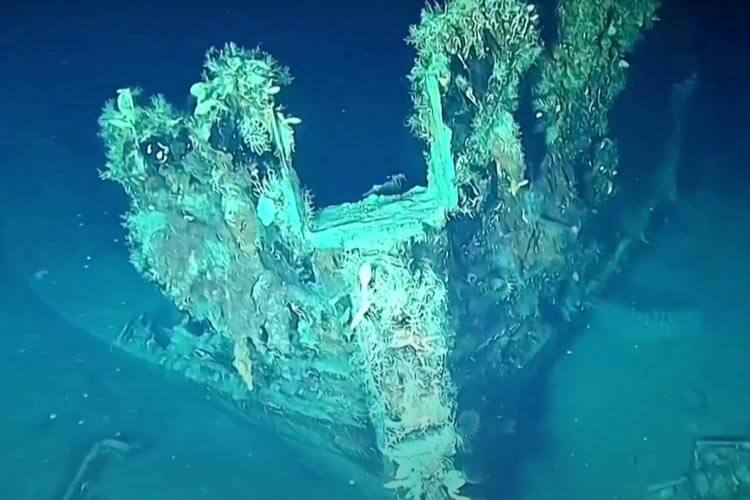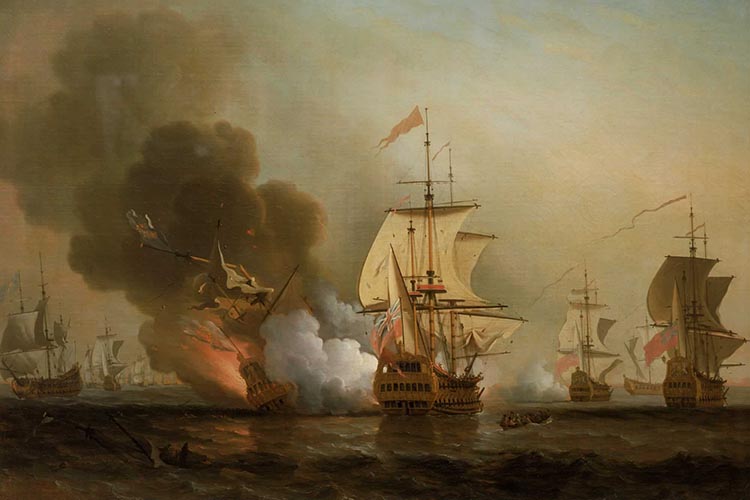
The wreckage of the San José contains the most valuable salvage ever known to history, but perhaps its treasures should be left where they are
San José, a Spanish galleon that sank outside the Colombian port of Cartagena in 1708 with a cargo of treasure worth some $ 20 billion in today’s money, is to be raised before 2026, according to the Colombian government.
San José was the 64-gun flagship of the Spanish Treasure Fleet which, together with two other warships, the San Joaquin and Santa Cruz, and 14 merchant vessels was part of a convoy destined for Spain after being laden with treasure.
On 8 June 1708, however, San José was intercepted by the British warship Expedition. After exchanging cannon fire for more than an hour, Expedition’s crew were preparing to board San José when the Spanish vessel suddenly exploded and sank rapidly with the loss of all but 11 of the 600 men on board.
An estimated 200 tons of gold doubloons, silver and emeralds went down with her.
Related articles
- Sunken temple found off Egypt’s Mediterranean coast
- Dive & Dig II Episode 5, 8,000 years under the sea
- Scuba diver finds ancient Crusader sword
- Wreck of Shackleton’s Endurance to be protected
- WW1 wreck of USS Jacob Jones located off UK coast

In 1980, a group of US investors branding themselves the ‘Sea Search Armada’ launched an expedition to find the San José, with promises from the Colombian government to split the proceeds if they did so. Despite the group claiming to have found the ship, the Colombian government reneged on the agreement and both Colombia and the Sea Search Armada went penniless.
San José was definitively located in November 2015 by the Woods Hole Oceanographic Institution (WHOI) who, working with the Colombian Navy, identified the ship lying at a depth of approximately 940m (3100ft). Colombia’s president announced the discovery a month later, although it would be more than two years before WHOI was permitted to disclose that it was involved, and the San José’s location kept a state secret.
The Colombian government announced that it would launch a salvage mission in 2017, however, in 2018, the United Nations Educational, Scientific and Cultural Organization (UNESCO) advised Colombia not to do so, as the San José should be classed as a world heritage site, and its recovery overseen by UNESCO.
The announcement by Colombian President Gustavo Petro that San José would be recovered by the end of his term of office in 2026 has already opened up a can of particularly angry worms, as a succession of parties lay stake to the claim.
The Colombian government insists the treasure belongs to them, because they commissioned the expedition that found it, and it’s in Colombian waters; the Spanish make a similar claim, because 300 years ago, the treasure belonged to Spain, and was lost on board a Spanish ship in the waters of a then Spanish-owned land.
Meanwhile, the indigenous Qhara Qhara people of Bolivia insist the treasure is rightfully theirs, because their ancestors were forced to mine it; and Sea Search Armada, which claims to have found the ship in the first place, says it is legally owed its $10 billion dollar percentage.
While the discovery of the ‘Holy Grail’ of shipwrecks is certainly a triumph for historical underwater archaeology and exploration, perhaps – like the other grail of myth and legend – it should remain beyond the reach of humankind, and belong only to the deep blue sea.
- Don’t shop – dive! ‘Blue Friday’ celebrates its fifth birthday - 21 November 2025
- Suunto launches new Nautic & Nautic S dive computers - 18 November 2025
- Generations Below – a father-son team working to build a global underwater treasure hunt - 11 November 2025


